Exploring Bali’s Most Beautiful Waterfalls – A Must-Visit in the Rainy Season
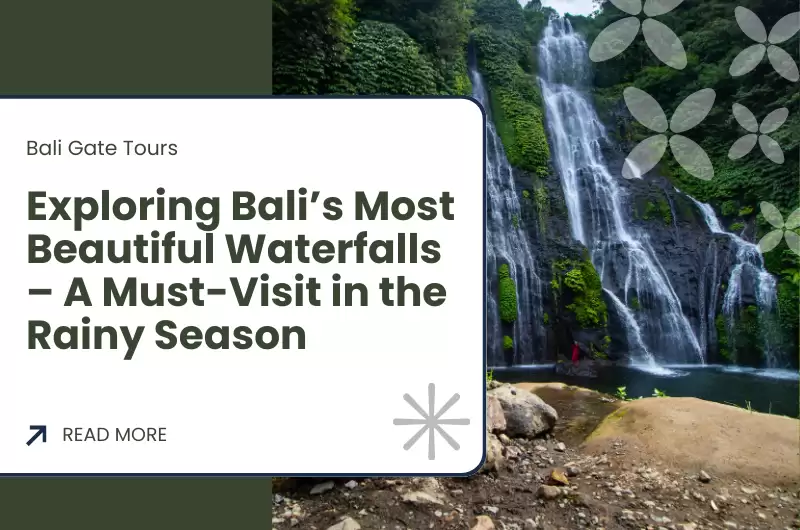
Bali is a paradise for nature lovers and adventure seekers, offering not just stunning beaches but also majestic waterfalls hidden deep in the jungle. While many travelers avoid the rainy season, it is actually the best time to visit Bali’s waterfalls, as the rains fill the rivers, making the cascades more powerful and breathtaking.
If you are ready to explore Bali’s lush landscapes and experience the magic of its waterfalls, here are the best waterfalls to visit in the rainy season, where nature comes alive in its full glory.
1. Sekumpul Waterfall – Bali’s Most Spectacular Hidden Gem
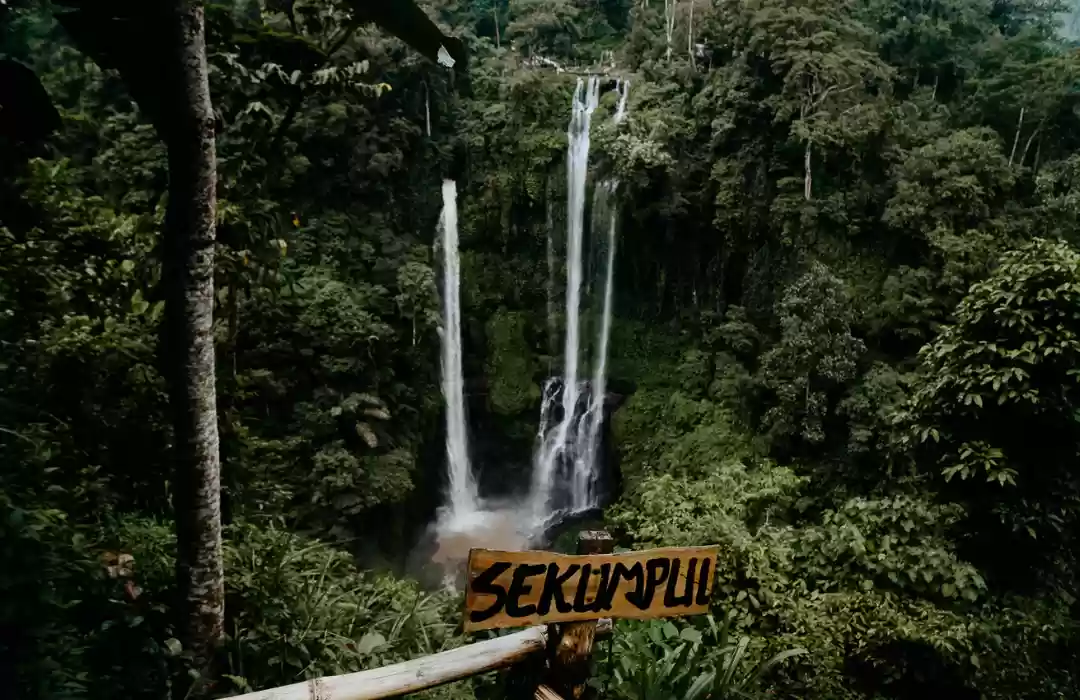
For those looking for the most beautiful waterfall in Bali, Sekumpul Waterfall is the ultimate destination. Nestled deep in North Bali’s jungles, this waterfall is actually a series of seven cascades surrounded by dense tropical greenery. The sight of multiple streams pouring down from towering cliffs creates a scene straight out of a fairy tale.
Why Visit Sekumpul Waterfall?
- Known as the most stunning and dramatic waterfall in Bali.
- Best visited during the rainy season when the cascades are at their fullest.
- Surrounded by lush forests, making it perfect for photography and nature lovers.
How to Get There:
Located in Buleleng Regency, about 2.5 hours from Ubud, the trek to Sekumpul involves a hike down through rice fields, bamboo forests, and river crossings.
Local Tip: Hire a local guide to help you navigate the trail and learn more about the surrounding flora and fauna.
2. Gitgit Waterfall – A Majestic Cascade with a Mystical Atmosphere
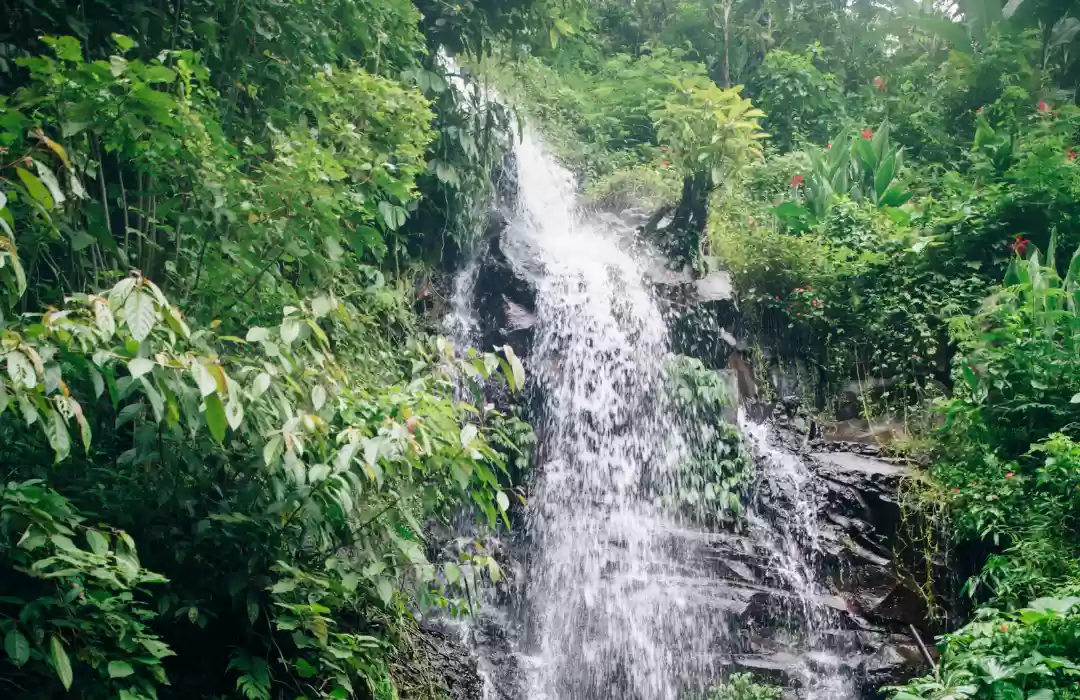
Another must-visit waterfall in North Bali, Gitgit Waterfall is one of the easiest to access yet still breathtakingly beautiful. Located near Singaraja, this 40-meter-high waterfall is surrounded by towering trees and misty jungle, creating a peaceful and mystical ambiance.
Why Visit Gitgit Waterfall?
- Easier to reach compared to other waterfalls, with a well-maintained path.
- One of Bali’s most photogenic waterfalls, especially in the misty morning hours.
- Offers a tranquil atmosphere, ideal for meditation and relaxation.
How to Get There:
Gitgit is easily accessible by car or scooter from Lovina or Ubud, with only a 15-minute walk from the parking area.
Local Tip: Visit early in the morning for the best lighting and fewer crowds.
3. Tegenungan Waterfall – The Best Waterfall Near Ubud
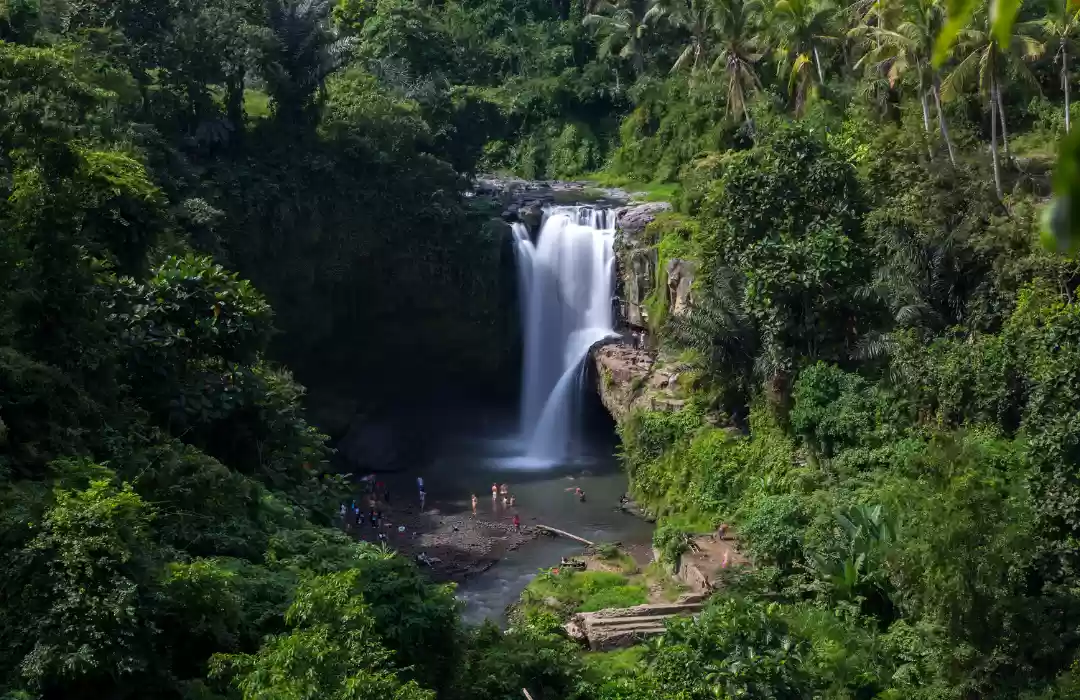
If you are looking for a waterfall close to Ubud, Tegenungan Waterfall is the perfect choice. Unlike many other waterfalls in Bali, which require long hikes, Tegenungan is easily accessible and offers a great swimming area at its base.
Why Visit Tegenungan Waterfall?
- One of the most popular waterfalls near Ubud.
- A large, open pool for swimming, perfect for cooling off after a hot day.
- Best visited during the rainy season when the water flow is stronger and more dramatic.
How to Get There:
Located just 30 minutes from Ubud, Tegenungan is one of the most accessible waterfalls in Bali, with a short and easy walk from the entrance.
Local Tip: After exploring the waterfall, visit one of the jungle-view cafés nearby for a relaxing break.
4. Banyumala Twin Waterfall – A Hidden Oasis in North Bali

If you are looking for a more secluded and untouched waterfall, Banyumala Twin Waterfall is an incredible choice. Unlike other crowded waterfalls, this hidden gem in Munduk remains peaceful and serene, surrounded by lush jungle and crystal-clear natural pools.
Why Visit Banyumala Twin Waterfall?
- Features two parallel waterfalls creating a breathtaking twin cascade.
- Offers a natural swimming pool with fresh, cool water.
- Less touristy, making it a peaceful and hidden paradise.
How to Get There:
Located near Munduk in North Bali, Banyumala requires a steep but rewarding trek through the jungle.
Local Tip: Wear water shoes, as the trail can be slippery after rain.
5. Tukad Cepung Waterfall – Bali’s Magical Cave Waterfall

For a truly unique waterfall experience, Tukad Cepung Waterfall is a must-visit. Hidden inside a rocky canyon, this waterfall creates a magical effect as sunlight beams through the cave, making it one of the most Instagram-worthy spots in Bali.
Why Visit Tukad Cepung Waterfall?
- Unlike other waterfalls, it is hidden inside a cave, creating a surreal atmosphere.
- Best visited during mid-morning when sunlight beams through the cave opening.
- A relatively short trek, making it accessible for all travelers.
How to Get There:
Located north of Ubud, Tukad Cepung requires a 30-minute trek through a jungle path and a shallow river.
Local Tip: Avoid visiting after heavy rain, as the water levels inside the cave can rise.
6. Nungnung Waterfall – A Powerful and Majestic Cascade
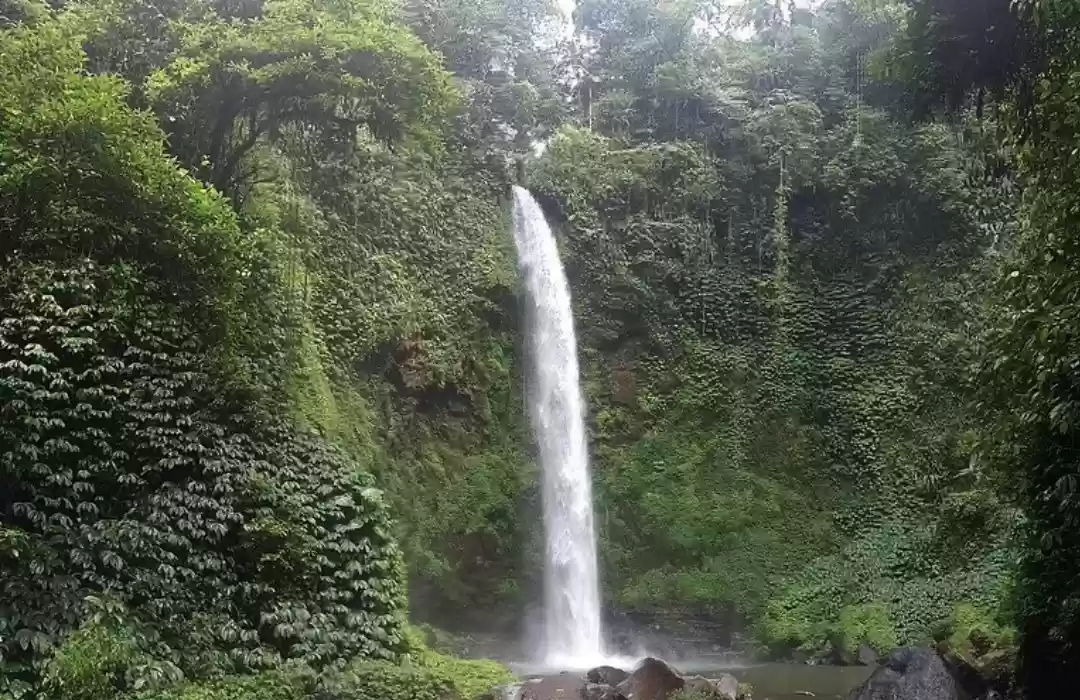
For those looking for a challenging hike to a truly impressive waterfall, Nungnung Waterfall is worth the effort. Standing at over 50 meters tall, it is one of Bali’s most powerful waterfalls, especially in the rainy season.
Why Visit Nungnung Waterfall?
- A high-volume waterfall that is at its most impressive during the rainy season.
- A great workout, as it involves descending 500 steps through the jungle.
- One of the less touristy waterfalls, offering a peaceful experience.
How to Get There:
Located between Ubud and Bedugul, Nungnung requires a steep descent but is well worth the effort.
Local Tip: Bring a rain jacket and waterproof bag, as the mist from the waterfall is powerful.
Why You Should Explore Bali’s Waterfalls in the Rainy Season
While some travelers avoid Bali’s rainy season, it is actually the best time to visit the island’s waterfalls, as they become more powerful, lush, and dramatic. Whether you prefer hidden jungle gems, towering cascades, or serene natural pools, Bali’s waterfalls offer a magical experience that should not be missed.
Best Waterfalls Based on Experience Level:
- Easiest to Access: Tegenungan, Gitgit
- Best for Adventure: Sekumpul, Nungnung
- Most Unique: Tukad Cepung (Cave Waterfall)
- Best for Swimming: Banyumala Twin Waterfall
If you are ready to experience Bali’s most beautiful waterfalls, plan your trip with Bali Gate Tours for a guided adventure into the island’s hidden natural wonders.










